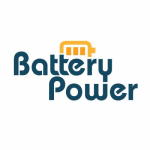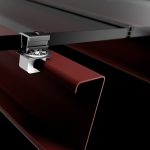As commercial solar systems age beyond the five- or 10-year mark, a familiar trend emerges: performance drops, alerts get missed and service calls arrive too late. Often, the problem isn’t with the technology, it’s with the assumption that remote monitoring alone can catch everything.
Operations and maintenance (O&M) is often an afterthought in this industry. But if we want solar assets to deliver reliable energy and ROI over the long haul, maintenance needs to be as much of a priority as installation.
What you don’t see can cost you

A tree takes root in a rooftop array, highlighting the limits of remote monitoring and the critical role of on-site inspections in commercial solar O&M.
Remote platforms can catch trends, but field diagnostics catch the real risks. Got Electric has uncovered corroded terminals, loose grounding conductors, water damage, even a 4-in. hole cut through a solar module by roofers installing a vent pipe. These are the kinds of issues invisible to monitoring software.
One notable example is when a tree took root between modules in a rooftop array, reducing output across strings. The dashboard didn’t catch it, but a technician did during a scheduled walkthrough. In another case, a portfolio using certain inverters had multiple strings burn up due to installers failing to remove factory fuse blocks. A preventive inspection identified the issue before further damage occurred.
Not every system ages the same
No two commercial sites demand the same care. Service plans should reflect that. Examples of specialized care needed:
- Coastal sites: Quarterly corrosion checks and annual anti-corrosion treatments.
- Snow-prone areas: Spring torque checks to offset freeze-thaw stress.
- Humid flat roofs: Increased summer IR scans to detect thermal anomalies.
- Tracker systems: Pre-storm alignment and driveline inspections.
- Legacy equipment: Biannual inverter reviews and staged replacement parts.
- Agricultural zones: Checks for vegetation, animal damage and debris near conductors or sensors.
Tailored plans protect uptime and extend asset life.
Service shouldn’t take weeks

A Got Electric qualified technician performs routine panel cleaning.
The stories are commonplace — systems go down, national O&M firms are unavailable and days pass while production is lost. That’s why responsiveness is a core part of a good O&M company’s approach.
An example from Got Electric: A commercial site logged an inverter fault on a Friday, and a technician was onsite within 24 hours, diagnosing a failed fan motor and restoring service using stocked parts, saving a full weekend of downtime. In another instance, a 1-MW tracker system threw a relay error late on a Saturday. Within 12 hours, Got Electric had diagnosed a failed undervoltage relay (UVR) and coordinated overnight delivery of the part. The system was back online before Monday morning.
The Got Electric team also responds to utility surge-related shutdowns. Whether it’s a tripped recloser or a faulted relay, a good O&M company will verify utility functionality and restore operation, sometimes with a simple reset. One site was experiencing intermittent ground faults on buried DC feeders, and Got Electric isolated the circuits and traced the issue back to a manufacturer defect. Ultimately, 5,000 ft of cable was replaced at no cost.
Each case is different, but the goal is the same: minimize downtime, protect performance and keep systems producing.
What owners should be asking
A good O&M partner doesn’t just respond; they anticipate. Ideal questions facility managers should ask:
- Does the O&M company send licensed electricians or just third-party techs?
- Are they local, or do you wait weeks for someone to show up?
- Does the company offer site-specific plans, or a one-size-fits-all checklist?
- Does it provide logs, photos and service reports?
- Do technicians perform torque checks, IR scans and inverter reviews?
- Do they coordinate with manufacturers on warranty claims?
Some signs the O&M company isn’t a great fit:
- No documentation or field records.
- No thermal or IV curve testing.
- Delays tied to part sourcing.
- Overreliance on dashboard alerts.
- Lack of compliance with utility or AHJ protocols.
Solar systems aren’t just a one-time investment — they’re infrastructure. And infrastructure needs consistent care. The best-performing systems over 25 years aren’t just well-designed. They’re well-maintained by people who know the signs, the stakes and the service.
 Grant Gotlinger is the President of Got Electric, a Maryland-based electrical contractor specializing in commercial solar, EV charging and O&M services. With over two decades of field experience and a passion for solving complex energy challenges, Grant leads a team of licensed electricians dedicated to performance-driven solutions. He is a strong advocate for technician-led solar maintenance and continues to support workforce development through hands-on apprenticeship training.
Grant Gotlinger is the President of Got Electric, a Maryland-based electrical contractor specializing in commercial solar, EV charging and O&M services. With over two decades of field experience and a passion for solving complex energy challenges, Grant leads a team of licensed electricians dedicated to performance-driven solutions. He is a strong advocate for technician-led solar maintenance and continues to support workforce development through hands-on apprenticeship training.











